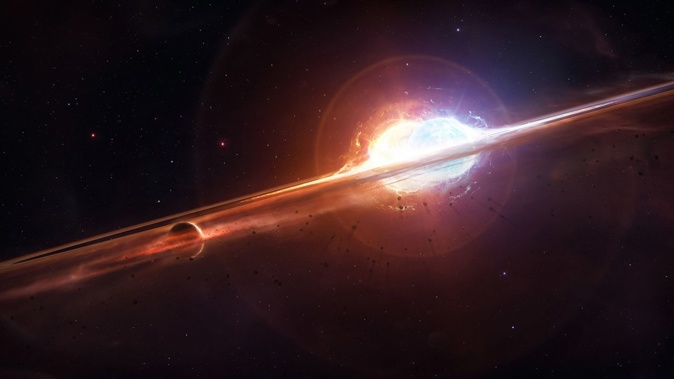
CNN — A Jupiter-like planet located 520 light-years from Earth may be an unlikely survivor after its host star had a temper tantrum.
The gas planet is known as 8 UMi b and was named Halla after its initial discovery by Korean astronomers in 2015. Halla, regarded as a sacred place, is the highest mountain in South Korea.
The exoplanet orbits a giant star larger than our sun named Baekdu, located in the Ursa Minor, or “Little Bear,” constellation.
Halla orbits Baekdu at a distance about half that between the Earth and the sun at 0.46 astronomical units, or 42,759,659 miles (68,815,020 kilometers). Halla is considered a “hot Jupiter,” a classification for exoplanets similar in size to Jupiter that have higher temperatures given how closely they orbit their host stars.
Astronomers believe that Halla somehow survived after its star experienced a violent transition that should have destroyed nearby planets. A study detailing the findings published Wednesday in the journal Nature.
Observations of Baekdu were made using NASA’s Transiting Exoplanet Survey Satellite, which studies nearby stars. The team’s observations revealed that the star is burning through the supply of helium at its core, since it already appears to have exhausted its hydrogen. The revelation suggests to astronomers that the star once expanded into a red giant star.
“Engulfment by a star normally has catastrophic consequences for close orbiting planets. When we realised that Halla had managed to survive in the immediate vicinity of its giant star, it was a complete surprise,” said study coauthor Dr. Dan Huber, Australian Research Council Future Fellow at the University of Sydney and associate professor at the Institute for Astronomy of the University of Hawaii at Manoa, in a statement.
“As it exhausted its core hydrogen fuel, the star would have inflated up to 1.5 times the planet’s current orbital distance — engulfing it completely in the process — before shrinking to its current size.”
Planetary survival scenarios
Our sun is expected to reach the end of its lifespan in 5 billion years, when it will expand to 100 times its current size and likely engulf and obliterate Earth and other planets in the solar system.
While our solar system only has one star, many stars across the universe exist in binary pairs. Astronomers are still investigating how planets form around these double-star systems — and the fate of those planets, as well.
When the research team realized the star was likely once larger than the current orbit of the planet, they carried out follow-up observations in 2021 and 2022 using the W. M. Keck Observatory and the Canada-France-Hawaii Telescope atop Mauna Kea in Hawaii.
The additional observations revealed that the planet’s nearly circular orbit, which takes 93 Earth days to complete, had remained stable for more than a decade.
“Together, these observations confirmed the existence of Halla, leaving us with the compelling question of how the planet survived,” said lead study author Dr. Marc Hon, astronomer and postdoctoral researcher at the University of Hawaii, in a statement. “The observations from multiple telescopes on Maunakea were critical in this process.”
Now, astronomers are trying to determine if it’s possible that the planet could withstand such a cataclysmic stellar event.
Scientists believe that gas giants like hot Jupiter exoplanets begin by orbiting at a greater distance from their host stars before eventually migrating closer. But that may not be the case for Halla, which orbits a rapidly evolving star.
“We just don’t think Halla could have survived being absorbed by an expanding red giant star,” Huber said.
It’s entirely possible that Halla never faced any danger to begin with, according to the researchers.
“The system was more likely similar to the famous fictional planet Tatooine from Star Wars, which orbits two suns,” said study coauthor Tim Bedding, an astronomer and professor at the University of Sydney, in a statement. “If the Baekdu system originally consisted of two stars, their merger could have prevented any one of them from expanding sufficiently to engulf the planet.”
In such a scenario, the stars would have fed off each other, according to the researchers.
Another possibility is that Halla is a fairly young planet born from a gas cloud that was created by a catastrophic collision between the two stars, making it a second-generation planet created in the system.
Take your Radio, Podcasts and Music with you









